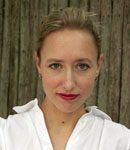Seven of 2015’s most notable columns
By Elisabeth Eaves | December 28, 2015
Two thousand and fifteen was a busy year for the Bulletin’s regular columnists, with Iranian nuclear negotiations, the Paris climate change talks, and tensions between Russia and the West all capturing the world’s attention at various times. As always, our columnists delivered incisive analysis on both headline-grabbing events and less-covered subjects that could affect our world just as much, like the US decision to relocate a biodefense laboratory to Kansas, or overreliance on technical gadgetry at nuclear sites.
Here are seven pieces from the last year that are especially worth revisiting, because they are lively, thought provoking, and just as relevant now as when they were first published:
The real threat from North Korea is the nuclear arsenal built over the last decade
By Siegfried S. Hecker
Former Los Alamos National Laboratory director Siegfried S. Hecker traces the US role in allowing Pyongyang to build up its current arsenal of nuclear weapons. As 2015 draws to a close, tensions are building anew between the two Koreas, making this history as vital as ever.
The next epidemic, brought to you by the US government
By Laura H. Kahn
In 2015 the United States broke ground on its new National Bio and Agro-Defense Facility in Manhattan, Kansas. Laura H. Kahn explains why putting a biosafety level 4 lab “smack in the middle of cattle country and Tornado Alley” is a very dangerous idea.
Sorting fact from fiction on Russian missile claims
By Pavel Podvig
In June, US and British leaders stirred alarm that Russia is building cruise missiles in violation of its treaty obligations. Pavel Podvig examines what Moscow is actually up to.
After Iran, can the US lead on arms control?
By Ariane Tabatabai
Throughout the Iranian nuclear negotiations that concluded in July, Ariane Tabatabai provided astute commentary on every major development. Here, she looks at whether the deal’s “convoluted and uncertain path to Congressional acceptance” in the United States has undermined Washington’s ability to be an arms control leader in the future.
Two degrees of climate change may be too much
By Dawn Stover
How did limiting climate change to two degrees become a consensus goal? Dawn Stover explains some of the not-so-scientific reasons, and points out that even a world just that much warmer than pre-industrial levels may be more than humans can cope with.
Should nuclear devices be used to stop asteroids?
By Seth Baum
Seth Baum argues that keeping a few nuclear devices around for peaceful purposes, like stopping a large asteroid from hitting the earth, may be a good idea. In so doing, he explores how to think about low-probability events that will be extremely harmful if they occur.
How the next US nuclear accident could happen
By Hugh Gusterson
The next time a major US nuclear accident occurs, it will be because of a security culture overconfident in automated technology and dependent on private contractors, argues anthropologist Hugh Gusterson.
Together, we make the world safer.
The Bulletin elevates expert voices above the noise. But as an independent nonprofit organization, our operations depend on the support of readers like you. Help us continue to deliver quality journalism that holds leaders accountable. Your support of our work at any level is important. In return, we promise our coverage will be understandable, influential, vigilant, solution-oriented, and fair-minded. Together we can make a difference.
Topics: Analysis, Biosecurity, Climate Change, Nuclear Weapons














